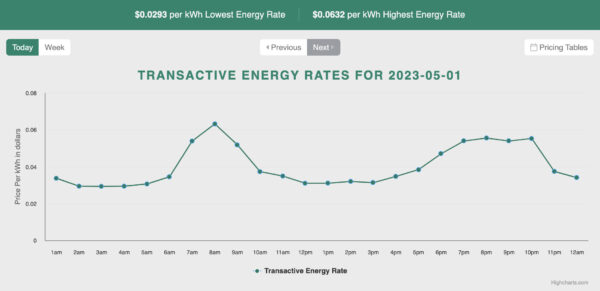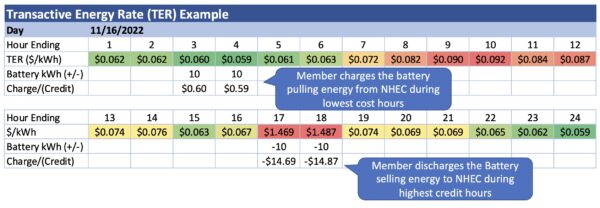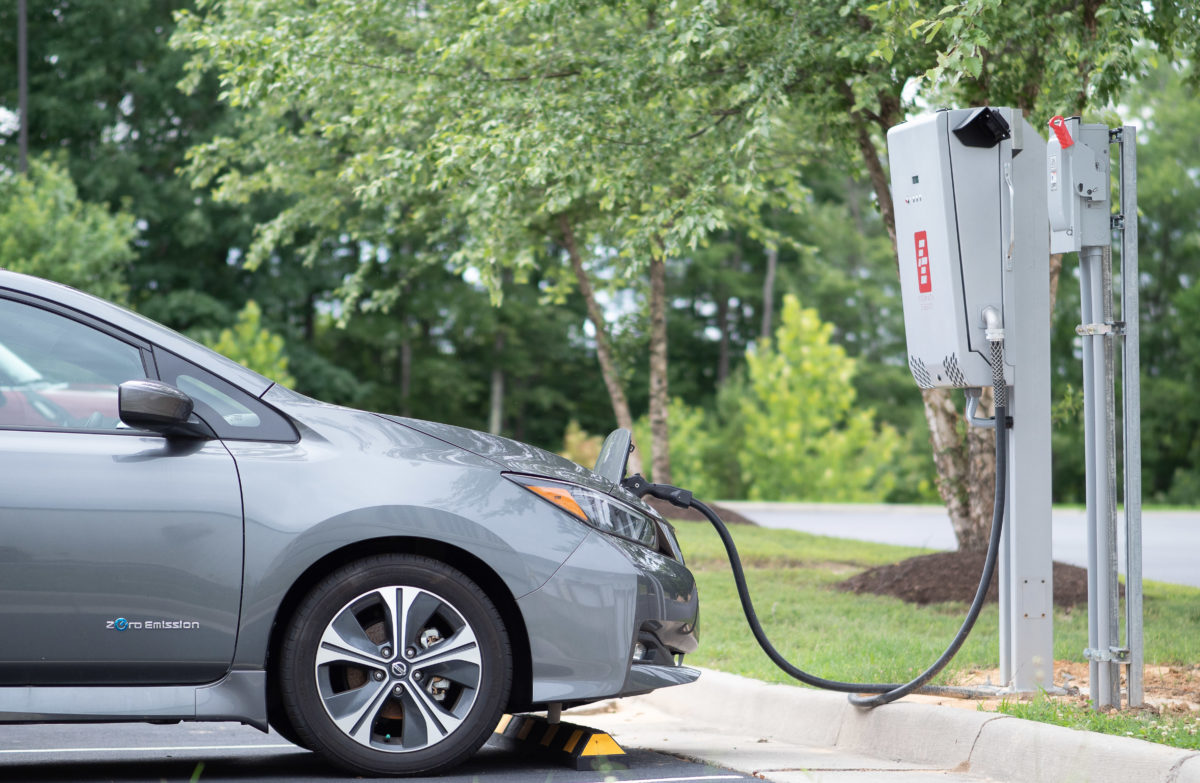The New Hampshire Electric Cooperative (NHEC) has launched a Transactive Energy Rate Pilot Program for its customers who own eligible battery storage systems, which may be paired with solar, or eligible electric vehicles (EVs) or EV chargers. Participating customers will pay for electricity used by eligible devices at 24 hourly rates set one day ahead, and may export electricity from those devices later, when hourly rates are higher.
Currently eligible devices, the utility said, are:
- Generac’s PwrCell battery system, which may be combined with solar;
- Either of two bidirectional EV chargers from Fermata Energy, “currently compatible with Nissan LEAF only;”
- Certain General Motors (GM) electric vehicles—the 2016 – 2019 Chevrolet Volt and the 2017 – 2021 Chevrolet Bolt.
The utility added that the FLO Home X5 unidirectional EV charger is expected to be eligible soon.
Nissan previously said that use of the Fermata Energy FE-15 bi-directional charger will not impact the Nissan LEAF’s battery warranty. NHEC projected that New Hampshire’s Plymouth State University, which leased two new Nissan LEAFs and connected them to two Fermata Energy chargers, will earn $4000 per year in credits for each vehicle.
GM expects to launch an enrollment process for owners of Chevrolet EVs later this month, while NHEC said it expects that GM’s Chevy Silverado and other GM models will become eligible during the pilot program.
The pilot program is limited to 50 of the utility’s 85,000 customers, and will run for six months “so we can fine tune the member experience before increasing participation,” said David Erickson, NHEC’s director of access and distributed resources.
The cooperative utility expects that participating members will typically work with a third-party aggregator to manage their device. The utility says that aggregators that have “successfully integrated devices” with the Transactive Energy Rate system to date are Generac, Fermata Energy and General Motors. The utility said it is “actively seeking” additional aggregators to help its members participate in the pilot program.

Transactive energy rates are set one day ahead, as shown in the above image from a utility slide deck. Each day the utility sends the next day’s 24 hourly price signals to registered devices, to “inform, not control,” it said.
The hourly price signals, or rates, are the same as NHEC’s full “avoided cost” rate, said Erickson. “This allows NHEC to charge our members (or credit those that provide energy services) at the same rates that we would be purchasing from our suppliers.” He added that costs related to the NHEC distribution system are not reflected in the rates.
The OpenADR Alliance said that NHEC chose OpenADR as a communication protocol between the eligible devices and its billing system. The utility selected Bellawatt to develop the software for the project.
The utility provided the following example of how a customer with 27 kWh of battery storage might earn $28.37 of credit in one day by purchasing electricity at low prices in the middle of the night, and selling electricity at high prices in the late afternoon.

The utility estimated that an 8.6 kW PV system with eligible battery system enrolled in the transactive energy rates program could earn a customer $1700 per year in credits if the renewable energy certificates were sold to the utility. An eligible 5 kW home battery system could earn a customer $1200 per year in credits, the utility said.
In California, demand flexibility enabled by dynamic rates is seen as a way to integrate more renewable generation into the grid, and achieve lower rates for customers. Flexible supply from batteries at times of peak demand can also contribute to a reduced need for peak capacity and lower rates.
Proposed legislation in California would require new EVs sold in the state after 2026 to have not only vehicle to grid but “vehicle to everything” capabilities.
New Hampshire Electric Cooperative serves 85,000 homes and businesses in 118 communities. It is the state’s largest cooperative utility and its second-largest utility.
This content is protected by copyright and may not be reused. If you want to cooperate with us and would like to reuse some of our content, please contact: editors@pv-magazine.com.








Not sure how 27kwh makes $28/day with under $.08/kwh rates?
We really need this but we need fair compensation. A $.04/kwh differential won’t get it.